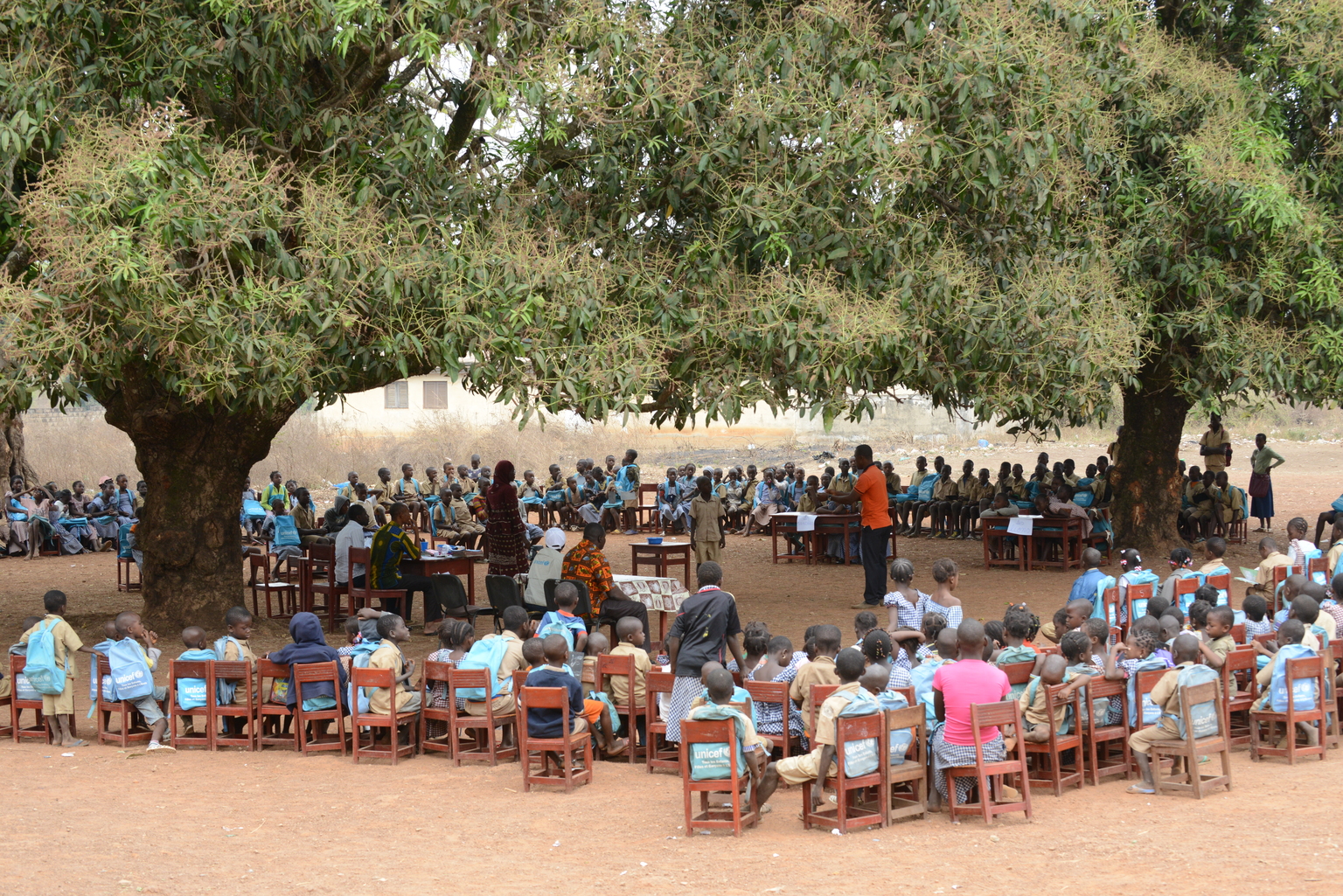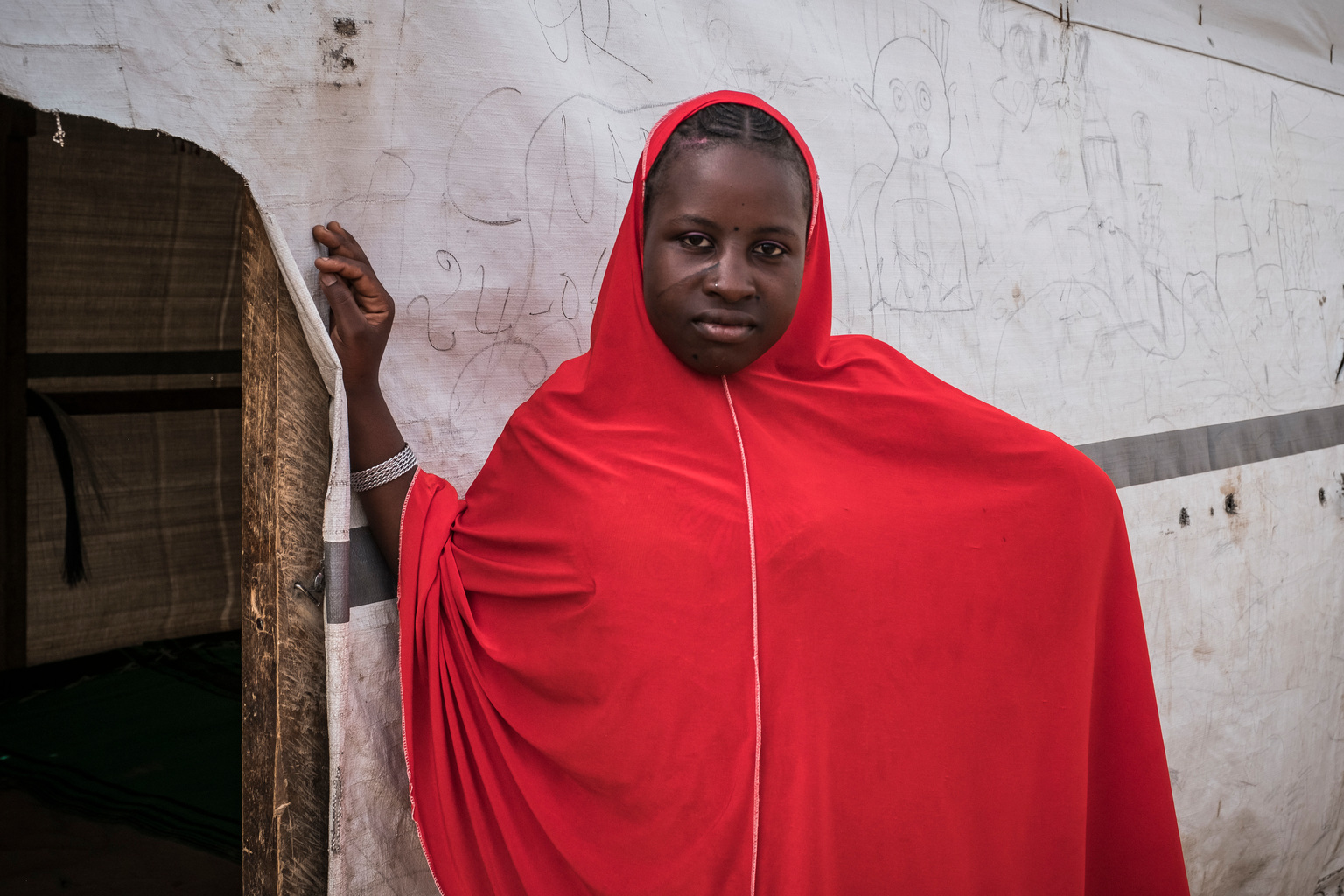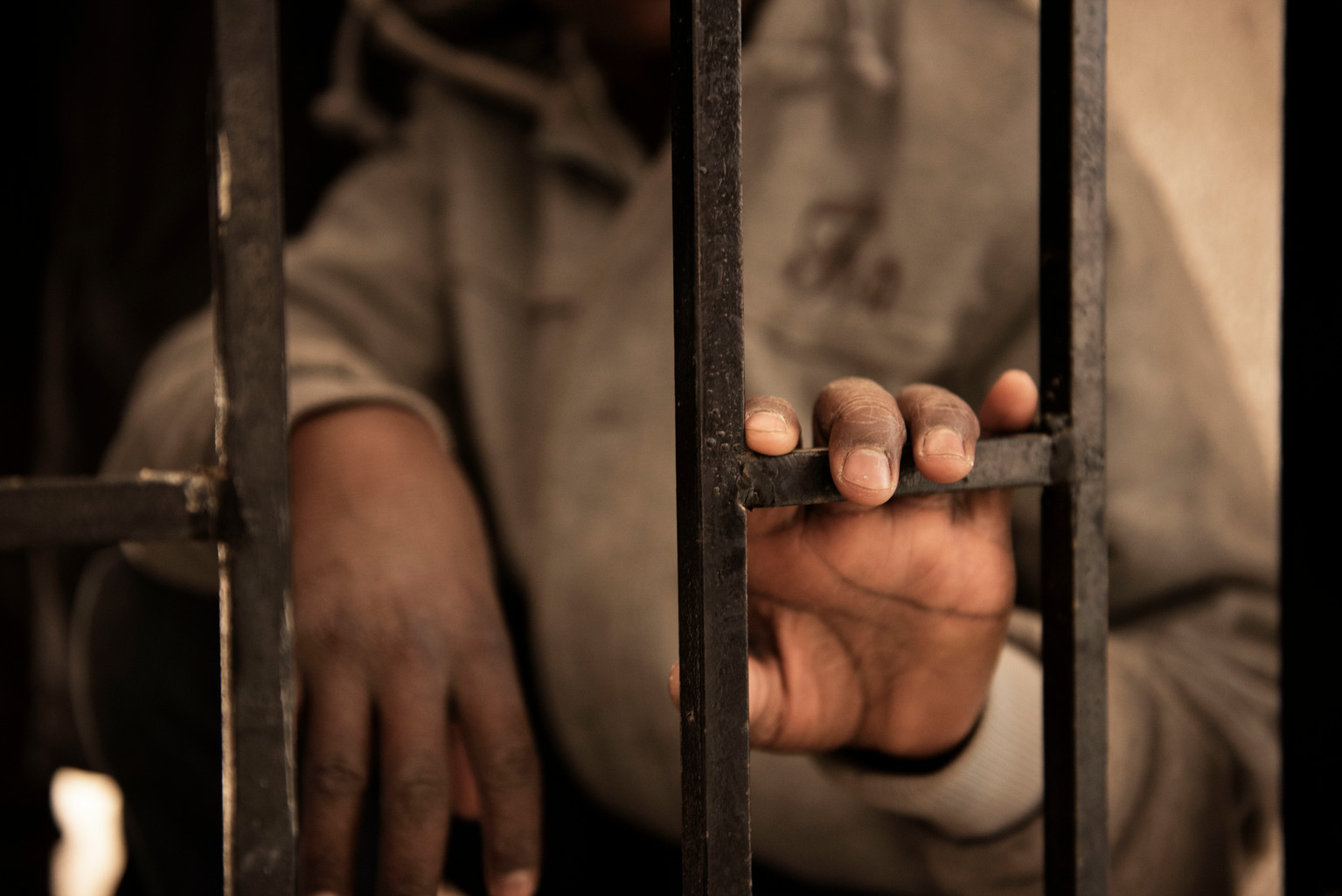寻求机会
2017-07-31
© UNICEF/UN05325/Dragaj
暴力冲突、贫穷和气候变化使移民儿童离乡別井,大部分仍在非洲生活。每年在西非和中非有1,200万人迁徙到其他地方,当中超过半数为儿童。约有75%儿童生活在非洲撒哈拉以南,只有不到两成的儿童正在迁徙到欧洲。人口快速增长、城市化、气候变化、经济发展不平衡和冲突持续导致移民的儿童和青少年数量增加。

© UNICEF/UNI82205/Holt
非洲撒哈拉以南严重受气候变化影响。科学家预测,这里的气温将会上升3-4度,高于全球整体预测水平。长期干旱和强烈暴风雨使农业和畜牧业发展艰难,迫使人们迁徙,寻求更美好的生活。图为2010年在乍得的沙尘暴。

© UNICEF/UN037727/Bindra
城市化是移民潮爆发的主因。高薪厚职-工作不再依赖农作物或雨水,许多人离开家园,纷纷前往城市发展。新思想和新文化是吸引人们迁徙欧洲的第二大主因。图为2016年尼日利亚熙熙攘攘的大街。

© UNICEF/UN016963/Dejongh
预计到2050年,西非和中非的人口会增长一倍。人口大幅增长不仅会耗尽环境资源,还对有限的基础设施造成压力,如教育资源和医疗保健,更令资源争夺更激烈。图为2016年科特迪瓦学校的阅读学会。

© UNICEF Cameroon/2017/Catton
伊丽莎白今年13岁。两年前,伊丽莎白从中非共和国的冲突中逃脱。她在途中与家人失散,並在寄宿家庭安顿下来,但换来的代价是嫁给一名陌生男人。
她说:「我知道只有教育能帮助我实现梦想。」

©UNICEF WCARO/2017/Rose
逃离到逸塞内加尔后,12岁的安妮‧玛丽(化名)与母亲和妹妹一起生活在细小房间。在2011年中非共和国的冲突中,房屋被烧毁,她从此变得一无所有。由于多年沒有身份证件,她们无法获得教育,也沒有足够食物。

© UNICEF/UN063974/Dejongh
很多弱势儿童都像九岁的克里斯,他们警示我们移民之路是多么的艰苦。许多移民遭边缘化,无法获得医疗保健和教育资源。克里斯与母亲居住在科特迪瓦搭建的帆布下,下雨时洪水氾滥,晴天时蚊虫漫天。

© UNICEF/UN029232/Phelps
玛哈泽纳今年六岁,父亲五年前离开尼日尔的村庄,前往利比亚寻找工作。母亲则冒着生命危险穿越沙漠,前往阿尔及利亚赚钱,后来却遭遣返。经济压力迫使他的姐姐不得不辍学,提早结婚。

© UNICEF Gabon/Dicko/2016
图为来自加蓬的14岁女孩海琳(化名),手举标语「我是孩子,不是商品」。家人生活在贝宁,迫切想要帮她寻求更好的未来,却不料受骗,堕入人贩子陷阱。海琳说:「我在加蓬从来沒有上学。」「我常常挨打,身体虚弱,从未接受任何医疗帮助,我甚至吃不饱。」

© UNICEF/UN060345/Sokhin
尼日利亚难民哈夫赛·奥马尔今年16岁,站在达累斯萨拉姆难民营学校的教室外。来乍得以前,哈夫赛从未上学。2015年刚来乍得时,她第一次上学,但因结婚,在2017年2月退学。

© UNICEF WCARO/ 2017/Rose
2017年,在马里的一个公交车站,站牌上印满了前往利比亚途经城市清单,令人眼花缭乱。对于那些从未离开过村庄的人来说,在复杂的交通网络中很难找到正确的路。途中的人贩子承诺为他们安排藏身之处,但却往往食言而废。

© UNICEF WCARO/2017/Delvigne-Jean
穆斯塔法在到达利比亚后又返回位于冈比亚的家,他说:「你可以看到人们遭射杀,殴打和折磨。」「到达利比亚以前我从未听到枪声。而在那里几乎每天日日夜夜都可以听到。」
穆斯塔法建立了一个组织来帮助返回家园的移民。

© UNICEF/UN052682/Romenzi
2017年,14岁的伊萨留在利比亚的一家拘留中心,他说:「我两年半前离开尼日尔。」「我的父亲为我筹钱踏上旅途,他祝我好运,然后让我离开。」
虽然每月的工作报酬不足港币234元 (30美元),但在被拘留前,伊萨还会一直存钱买船票,移民到意大利。 」

© UNICEF Mauritania/2017/Alvarez
四岁的优素福梦想返回几内亚的家园。父亲巴布卡离家前往西班牙,但却在毛里塔尼亚花光所有钱,不得不当建筑工人维持生计。六年后,他放弃前往欧洲的梦想,只想与家人返回家园。

© UNICEF Central African Republic/2017/Luthi
16岁的希拉已经结婚並为人母,她的丈夫离开马里前往赤道几内亚寻找工作。儘管已经很久沒有他的消息,他还是一直在寄钱给家里。然而,生活依然过得十分艰难,她不仅要做饭,打扫,拾柴,还要在附近的一座金矿工作。

© UNICEF/UN034820/Schermucker
图为2016年,阿瓦与她的女儿南特妮在马里生活。为了寻求更好的生活,直至解决贫穷根源问题,並提出解决方案如提供工作机会、医疗保健和平等教育之前,人们将会继续踏上危险的迁徙之路。









